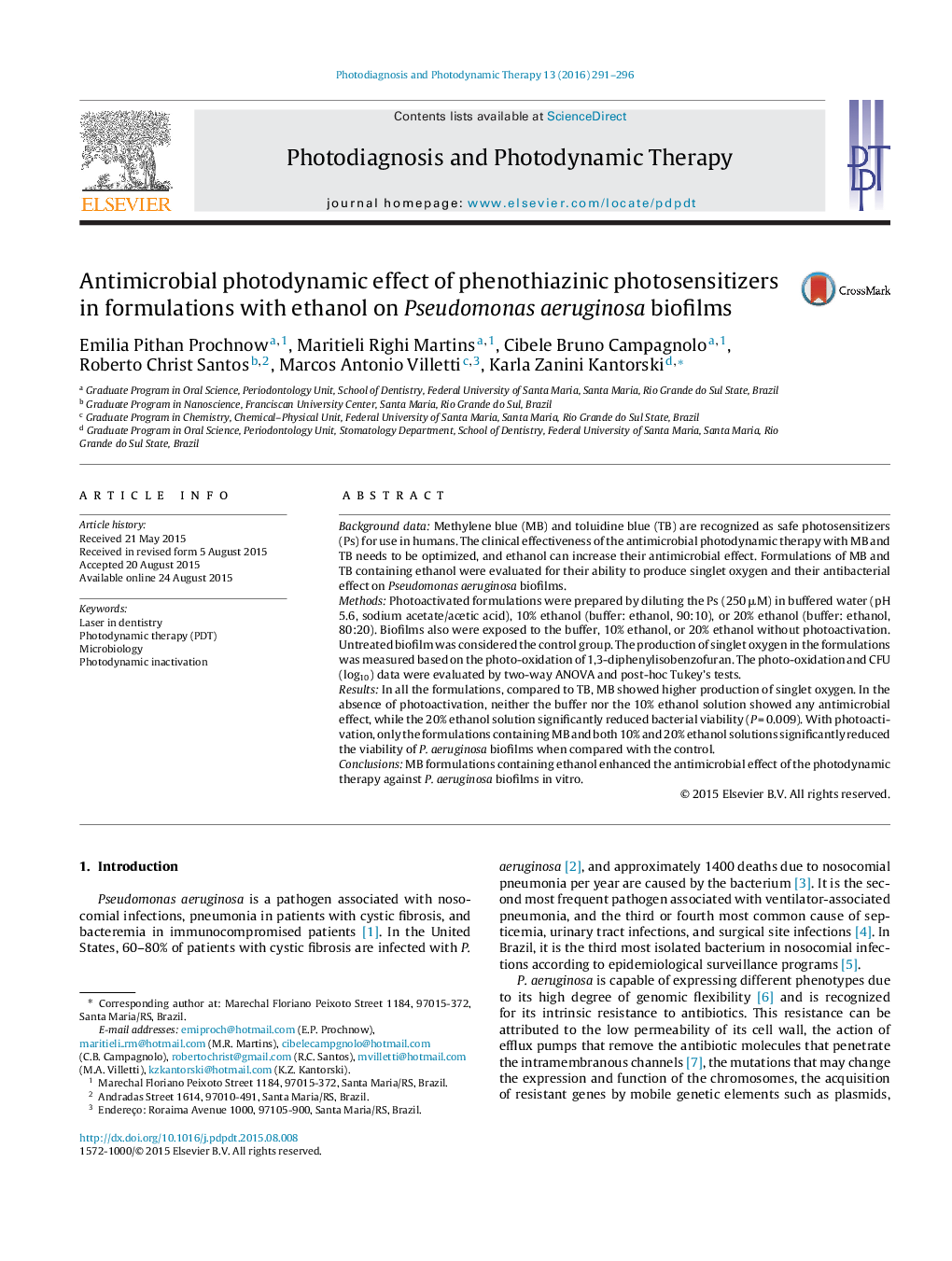| کد مقاله | کد نشریه | سال انتشار | مقاله انگلیسی | نسخه تمام متن |
|---|---|---|---|---|
| 3817655 | 1597729 | 2016 | 6 صفحه PDF | دانلود رایگان |

• MB formulations produced more singlet oxygen than TB formulations.
• MB/ethanol formulations produced more singlet oxygen than MB/water formulation.
• MB/ethanol formulations promoted a statistical reduction of P. aeruginosa.
• TB/ethanol formulations promoted no significant reduction of P. aeruginosa.
Background dataMethylene blue (MB) and toluidine blue (TB) are recognized as safe photosensitizers (Ps) for use in humans. The clinical effectiveness of the antimicrobial photodynamic therapy with MB and TB needs to be optimized, and ethanol can increase their antimicrobial effect. Formulations of MB and TB containing ethanol were evaluated for their ability to produce singlet oxygen and their antibacterial effect on Pseudomonas aeruginosa biofilms.MethodsPhotoactivated formulations were prepared by diluting the Ps (250 μM) in buffered water (pH 5.6, sodium acetate/acetic acid), 10% ethanol (buffer: ethanol, 90:10), or 20% ethanol (buffer: ethanol, 80:20). Biofilms also were exposed to the buffer, 10% ethanol, or 20% ethanol without photoactivation. Untreated biofilm was considered the control group. The production of singlet oxygen in the formulations was measured based on the photo-oxidation of 1,3-diphenylisobenzofuran. The photo-oxidation and CFU (log10) data were evaluated by two-way ANOVA and post-hoc Tukey’s tests.ResultsIn all the formulations, compared to TB, MB showed higher production of singlet oxygen. In the absence of photoactivation, neither the buffer nor the 10% ethanol solution showed any antimicrobial effect, while the 20% ethanol solution significantly reduced bacterial viability (P = 0.009). With photoactivation, only the formulations containing MB and both 10% and 20% ethanol solutions significantly reduced the viability of P. aeruginosa biofilms when compared with the control.ConclusionsMB formulations containing ethanol enhanced the antimicrobial effect of the photodynamic therapy against P. aeruginosa biofilms in vitro.
Journal: Photodiagnosis and Photodynamic Therapy - Volume 13, March 2016, Pages 291–296